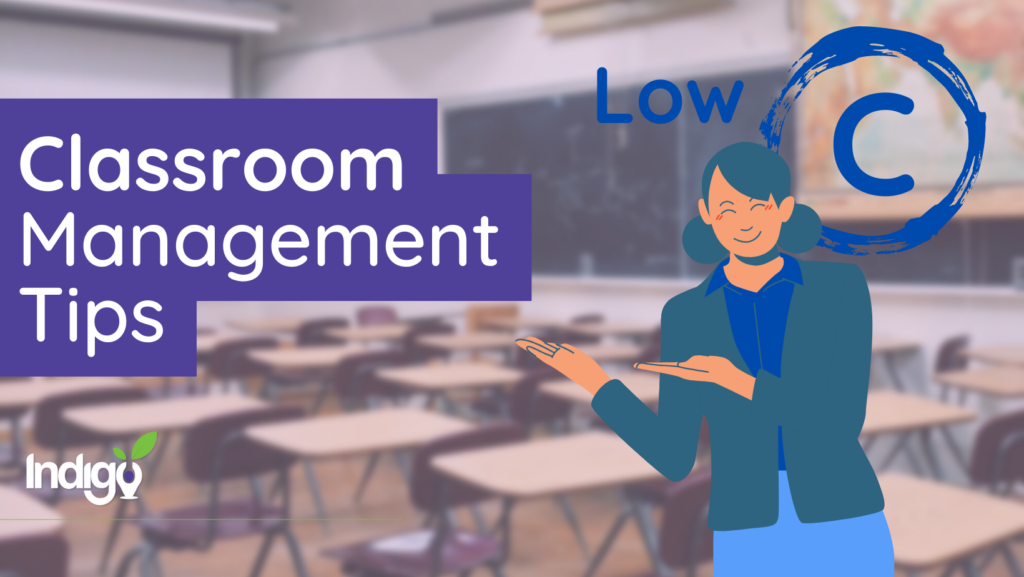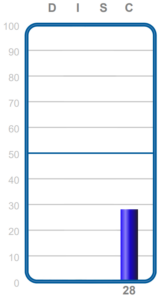Low Compliance Classroom Management Tips
Personalized classroom management strategies help meet individual student needs, fostering a positive learning environment, increasing motivation, and leading to better student performance. Understanding a student’s core DISC style provides a great framework helping each student thrive! In this blog, we’ll explore techniques for managing high steadiness students, creating a structured and results-focused environment for optimal performance.
Someone who scores below 50 in the DISC Steadiness behavioral style (blue bar on the DISC graph is considered “low” in that style). The lower the score, the more the classroom strategies typically apply.
A low compliance student may have characteristics such as being non-conforming, big picture oriented, and uninterested in details. Additionally, they may have difficulty with time management and organization.
Here are some classroom management strategies to keep in mind for you students who have a low compliance behavioral style:
Encourage autonomy and independence.
Low compliance students may have a strong sense of individuality, so encourage autonomy and independence in their learning and decision making.
Use positive reinforcement and recognition.
Low compliance students may be more responsive to positive reinforcement and recognition, rather than traditional forms of discipline.
Provide flexibility in assignments and activities.
Provide opportunities for hands-on and experiential learning.
Be patient and understanding.
Give them clear and specific feedback on their work.
Low compliance students may need clear and specific feedback on their work to understand their progress and areas for improvement.
Allow them to express their ideas, opinions and suggestions.
Low compliance students may have unique perspectives or ideas, so allow them to express themselves and incorporate their ideas into the classroom.
These strategies aim to provide a flexible and engaging learning environment that takes into account the individual needs of low compliance students and encourages them to take responsibility for their learning and behavior. It also provide opportunities for positive reinforcement and recognition to build their motivation and self-esteem.
Note: It’s important to note that the DISC assessment is just one tool used to understand and describe behavior, and it should not be used to label or judge individuals. Each person is unique and may exhibit a combination of different behavioral traits. Additionally, behavior can change depending on the situation and context. Therefore, it is essential to use the information from the DISC assessment as a starting point for understanding and communication, not as a means of making judgments or assumptions about a person’s character or abilities.
Low Compliance Classroom Management Tips Read More »


